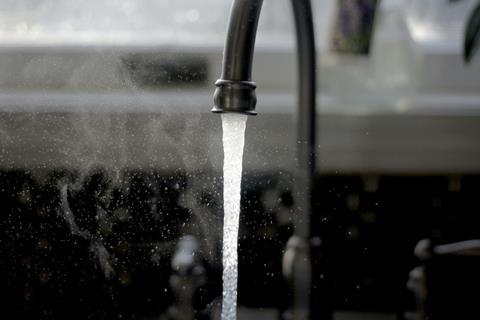As gas and electricity prices soar and the country moves closer to Net Zero, Stuart Williams contemplates the embodied energy we are wasting down the drain

Standing by the hot tap waiting for it to run warm is a place that we have all impatiently stood.
Some days it can seem like hours of watching the water trace its circular path down the plughole, as we contemplate how much is going to waste.
But reflection quickly ends the moment warm water arrives.
There is, however, a whole list of losses beyond the water itself, all of which have either a financial or environmental cost.
Using the assumption that most houses have 15mm piping with a discharge rate of 0.2 litres/second and a mean average time of 20 seconds for the water to run warm, around four litres of water will run off during the waiting period.
Those four litres of cold water, known by plumbers as “Dead Leg”, were once hot and were heated by the householder running them down the drain.
Cost averaging gas and electricity prices, it comes to around 2 pence per litre of water to heat it to temperature in a domestic setting.
8 pence down the drain each time you turn your tap on.
Assuming a conservative figure of once a day for 300 days of the year, that is £24.00 and 1,200 litres of water wasted per year.
The widely recognised figure for the carbon used in the purification of water is 0.3g/litre. Again, using the estimate of 300 run-offs per year, that is 3.6Kg of Co2 per household or 0.0036 tons/year.
Some days it can seem like hours of watching the water trace its circular path down the plughole, as we contemplate how much is going to waste.
Outwardly it may not seem like much, but there are approximately 28 million households in the UK, which creates around 100,000 tons of Co2 per year.
In addition to this is the carbon input of heating prior to cooling in the pipe within the home.
In 2021 the UK imported 7.5% of the electricity that it used, meaning there is a deficit of around 8% in the country’s capacity to generate electricity.
Assuming that the water is being raised from 10oC to 50oC, that is around 0.2Kwh of energy for the four litres of water run-off to heat it to temperature before it goes cold in the pipe. At 300 run-offs per year and 28 million households that is 1,680,000,000Kwh, 1.68TWh per year.
That is around 0.5% of the total UK generation in 2021, and around 6.8% of the electricity that the UK imports.
This type of profligate use of energy, purifying water to run it down the drain, and heating water to let it go cold was always wasteful but was just accepted as the norm.
We now live in a world where the true cost of generating electricity is understood. It seems ridiculous to let this embodied energy and the concomitant Co2 run back down the drain to be purified yet again without ever being used.

None of the figures above appear to be excessive when considered household by household, but the cumulative impact of this waste seems unconscionable in a world where many still have no access to clean drinking water.
A solution has always existed. Point-of-use hot water heaters have been in use for many years, heating just the water that is required at the moment that it is required.
No water is being stored to cool or be kept at temperature by an electric immersion heater nor is a, soon to be banned, gas boiler required to fire up and reach temperature. There is no dead leg of water that was once hot and is now cold that has to be run off before the elusive warm water arrives.
Point-of-use heaters are clean and can be installed beneath sinks and basins. The days of the big, unsightly water geyser bolted to the wall are over.
In addition, the amount of pipe needing to be plumbed into a building is instantly halved as no hot feed is required.
For many people, it will simply be an addition to the point-of-use heater that they already have in their bathrooms.
All electric showers are just that, a point-of-use hot water heater, providing exactly the required amount for our shower and supplied by a cold feed pipe.
It has taken many years to accept that flushing toilets with six to eight litres of fresh drinking water was wasteful and now we have dual flush toilets, rainwater recycling and greywater recycling to remove our effluent.
Yet we still run perfectly pure water down the plughole a number of times a day.
Postscript
Stuart Williams is a lecturer at the University of Wolverhampton, where he delivers a course on Building Control and Building Surveying















3 Readers' comments